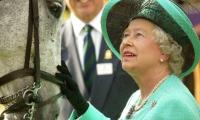At least two people have died due to heatstroke in Karachi over the past two days as the city experiences its worst heatwave in the month of July, the Pakistan Meteorological Department (PMD) said on Thursday.
Karachiites experienced the hottest July night for the third consecutive time when the minimum temperature remained 32°C between Wednesday and Thursday, PMD officials said. This temperature was the highest minimum recorded across Pakistan that night.
Sindh Health Department officials said that 51 people have died due to successive heatwaves in the city in June and July. However, welfare organisations claim that over 250 people have succumbed to heatstroke in the city over the past two months.
The mercury touched 40.5°C in Karachi on Wednesday, resulting in two heatstroke fatalities. Dozens of people were also taken to various health facilities after fainting due to the hot and humid weather while participating in the Muharram processions in the city.
On Thursday the temperature reached 38.2°C, and with the relative humidity of 51 per cent, it felt like 50°C, causing immense hardships for people in breathing and working under the sun.
“Under the influence of a low-pressure area, the sea breeze remained suspended in Karachi on Wednesday and the first half of Thursday, raising the temperature above 40°C on Wednesday and over 38°C on Thursday. High humidity made the feels-like temperature around 50-55°C,” Sindh Chief Meteorological Officer Dr Sardar Sarfaraz said.
According to PMD officials, the suspension of the sea breeze due to a low-pressure area and cloudy weather resulted in extremely hot and humid conditions in the city. The urban heat island effect also contributed to the problem.
“At a time when the sea breeze was suspended in Karachi, clouds over the city’s skies worsened the situation, as they prevented the heat from radiating back into space. Consequently, Karachiites experienced hot and humid weather over the past two days,” Dr Sarfaraz added.
He noted that the situation is likely to improve slightly over the next two or three days with the resumption of the sea breeze, but temperatures would remain in the range of 36-37°C in the coming days.
“But we are not expecting any significant rain-causing system for the remainder of July,” he said, adding that it is now the right time to take climate change and extreme weather conditions seriously, and work on adaptation and mitigation measures.
In response to a query, the official said that majority of the concrete structures in Karachi are grey, which absorbs more heat compared to white structures, while black roads also trap heat during the day and release it at night.
“We need more trees in the megacity, lighter-coloured buildings to reflect light, and reduced carbon emissions through environmentally friendly transportation policies,” he said, adding that future summers are likely to be harsher than the current season.
50 cases in 24 hours
The health department revealed that nearly 50 heatstroke cases were reported over the past 24 hours, reports Geo News. The health authorities said that the two latest fatalities were reported at Dr Ruth KM Pfau Civil Hospital Karachi.
The city has been in the grip of a heatwave for the past few days, making life miserable for the masses as they face hours-long unannounced load-shedding despite the power utility’s assurances.
A day earlier, the mercury in the metropolis reached a sweltering 40.5°C, which in reality felt like a scorching 56°C. The feels-like temperature is based on the experience of the actual sensation of heat or cold outdoors.
It is based on various environmental factors comprising humidity levels, air temperature and wind speed — all of which together influence the perception of weather among individuals according to their exposure.
Meteorologists say that the feels-like temperature is the perceived temperature in a certain area and can be higher owing to environmental factors, despite the actual temperature. It is the temperature which is sensed by the human body after its interaction with the temperature reflected from Earth’s surface.
37 bodies found
Due to the severe heatwave and humidity, the discovery of bodies across the city has resumed, with 37 of them having being found over the past two days. The deceased included elderly persons.
All the bodies were taken to public hospitals by Edhi and Chhipa ambulances, following which they were moved to the cold storage facilities of the two welfare organisations. Rescue officials said that most of the deceased appear to be drug addicts.
Edhi and Chhipa spokespersons said the bodies were found in the New Karachi, Gulistan-e-Jauhar, Chakiwara, Zaman Town, Saeedabad, Awami Colony, Defence, SITE Super Highway, and other areas.
The customs officials arrested the passenger at the airport along with 7 kg of silver jewellery seen in this image...
Information and Transport Minister of Sindh Sharjeel Inam Memon addressing to journalists in a press briefing...
A child is being administered polio drops by a health worker. — AFP/FileThe Polio Eradication Initiative ...
FIA officials arrested 3 people traveling abroad on fake passports and documents, out of which 2 people are present in...
In this undated photo, a patient is being shifted to the hospital in ambulance. — AFP A motorcyclist was killed in...
This representational image shows a person holding a gavel. — Pexels/FileAn anti-terrorism court has acquitted a man...







